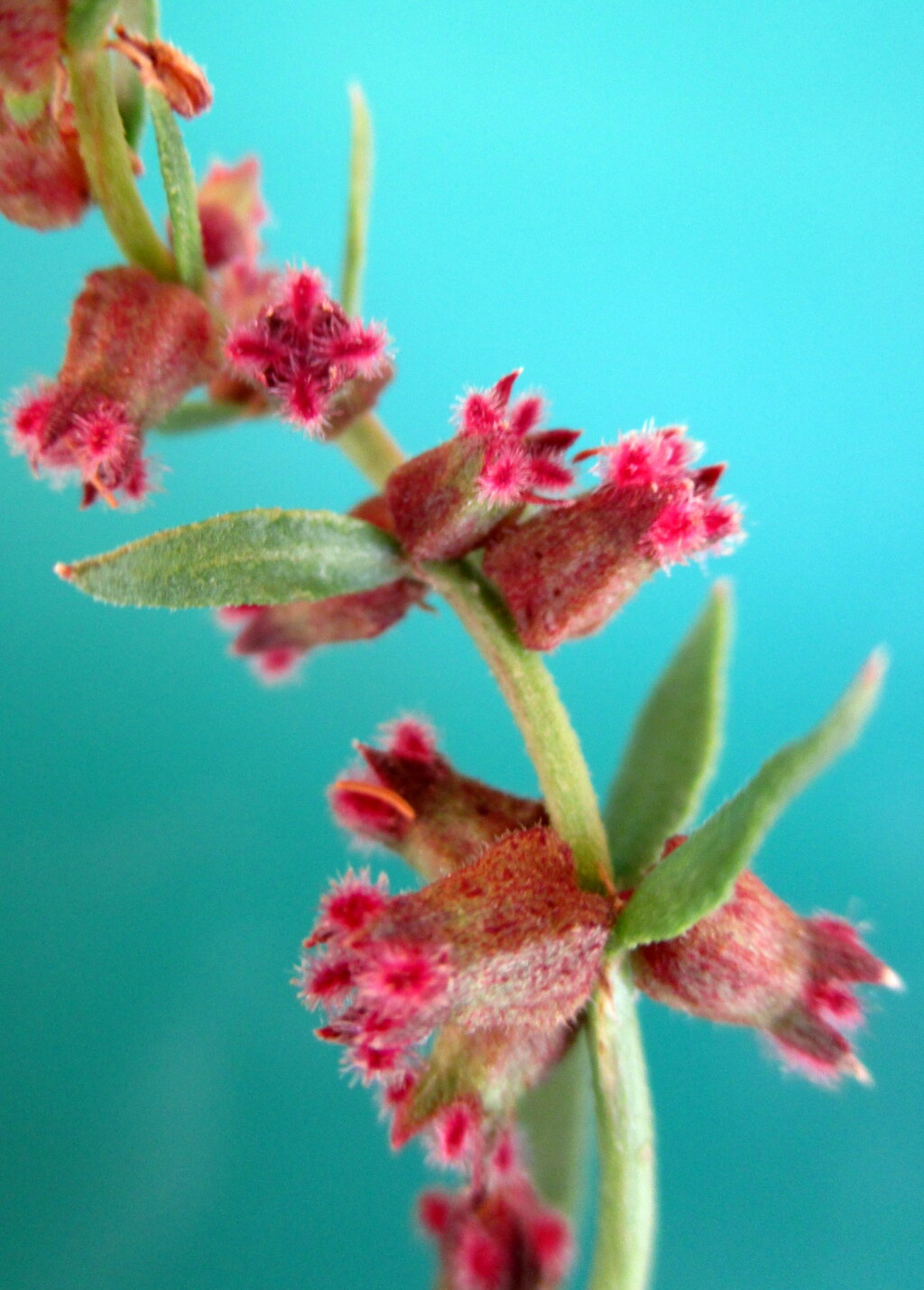Haloragis heterophylla
Brongn. Varied RaspwortErect perennial herb 15–50 cm tall; rootstock deeply rhizomatous; stems 4-ribbed, with spreading uncinate hairs, rarely glabrous. Leaves more or less opposite below, alternate above, linear, trifid to pinnatifid, 1–3 cm long, scabrous, sessile; lower bracts leaf-like, upper bracts linear, 3–5 mm long, entire, scabrous; bracteoles linear, 0.3–0.6 mm long, entire, brown. Inflorescence 1–3-flowered; flowers more or less pendulous; pedicel c. 0.5 mm long; sepals 4, green, narrow-triangular, 0.8–1.5 mm long; petals 4, red, 2.2–3.2 mm long; stamens 8; ovary 4-celled, globular, 0.6–0.8 mm long, smooth, scabrous, styles 4, stigmas red. Fruit obpyriform, 1 or 2 per axil, 1.5–2.4 mm long, 1.3–1.8 mm diam., pendulous, 4-ribbed and angled, smooth at top, rugose in lower half, scabrous. Flowers Sep.–Feb.
LoM, MuM, Wim, GleP, VVP, VRiv, MuF, GipP, OtP, WaP, Gold, CVU, GGr, DunT, NIS, EGL, EGU, HSF, HNF, Strz, MonT, VAlp. Widespread in Victoria, mostly at lower altitudes, but montane to subalpine in the Cobungra-Omeo area, especially in moist areas near creeks and along drainage lines.
Intergrades somewhat with H. aspera, but can be distinguished from that species by its more slender habit, mostly trifid leaves and smaller, usually 4-angled fruit.
Jeanes, J.A. (1996). Haloragaceae. In: Walsh, N.G.; Entwisle, T.J., Flora of Victoria Vol. 3, Dicotyledons Winteraceae to Myrtaceae, pp. 887–908. Inkata Press, Melbourne.
 Spinning
Spinning


